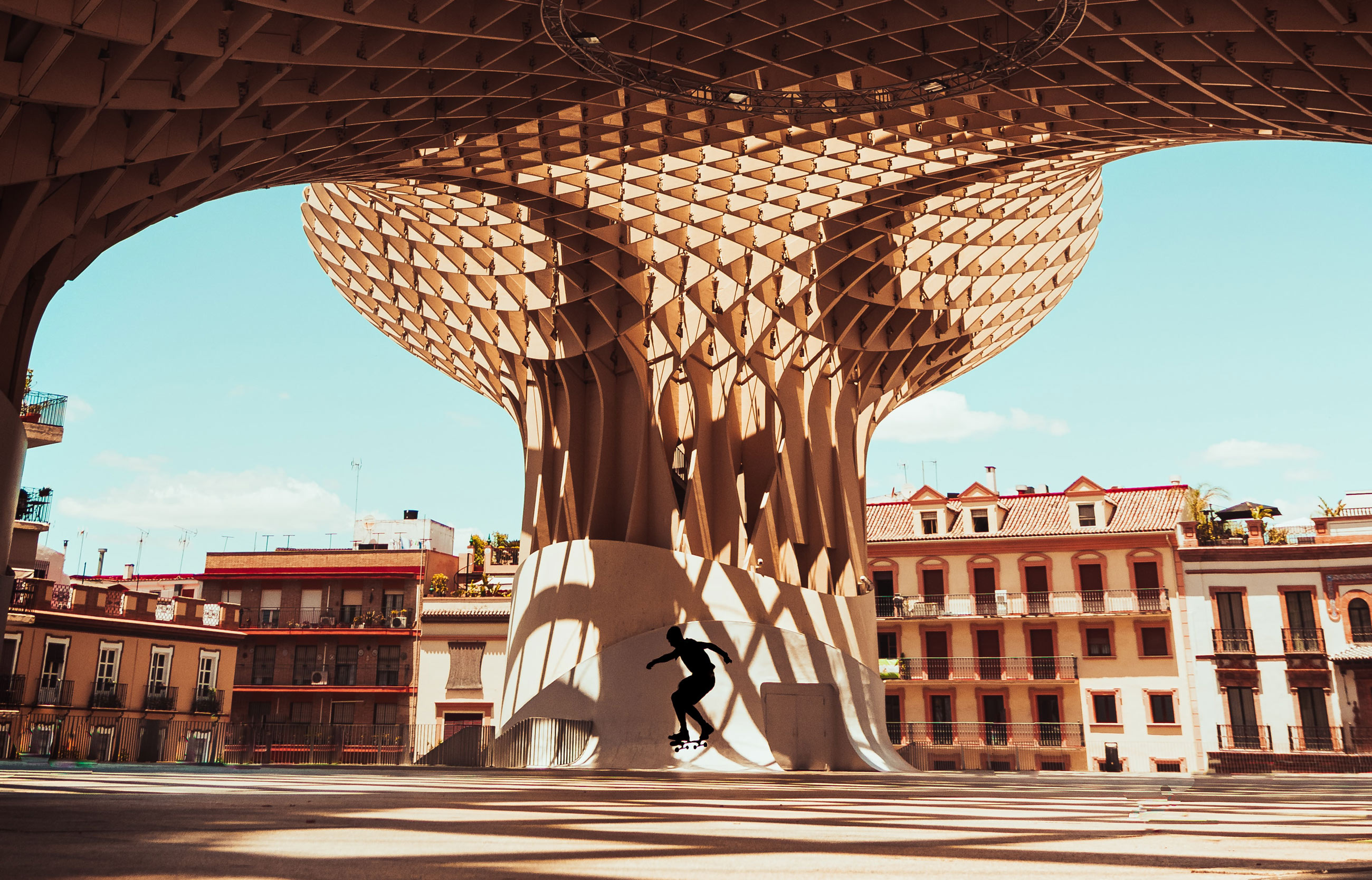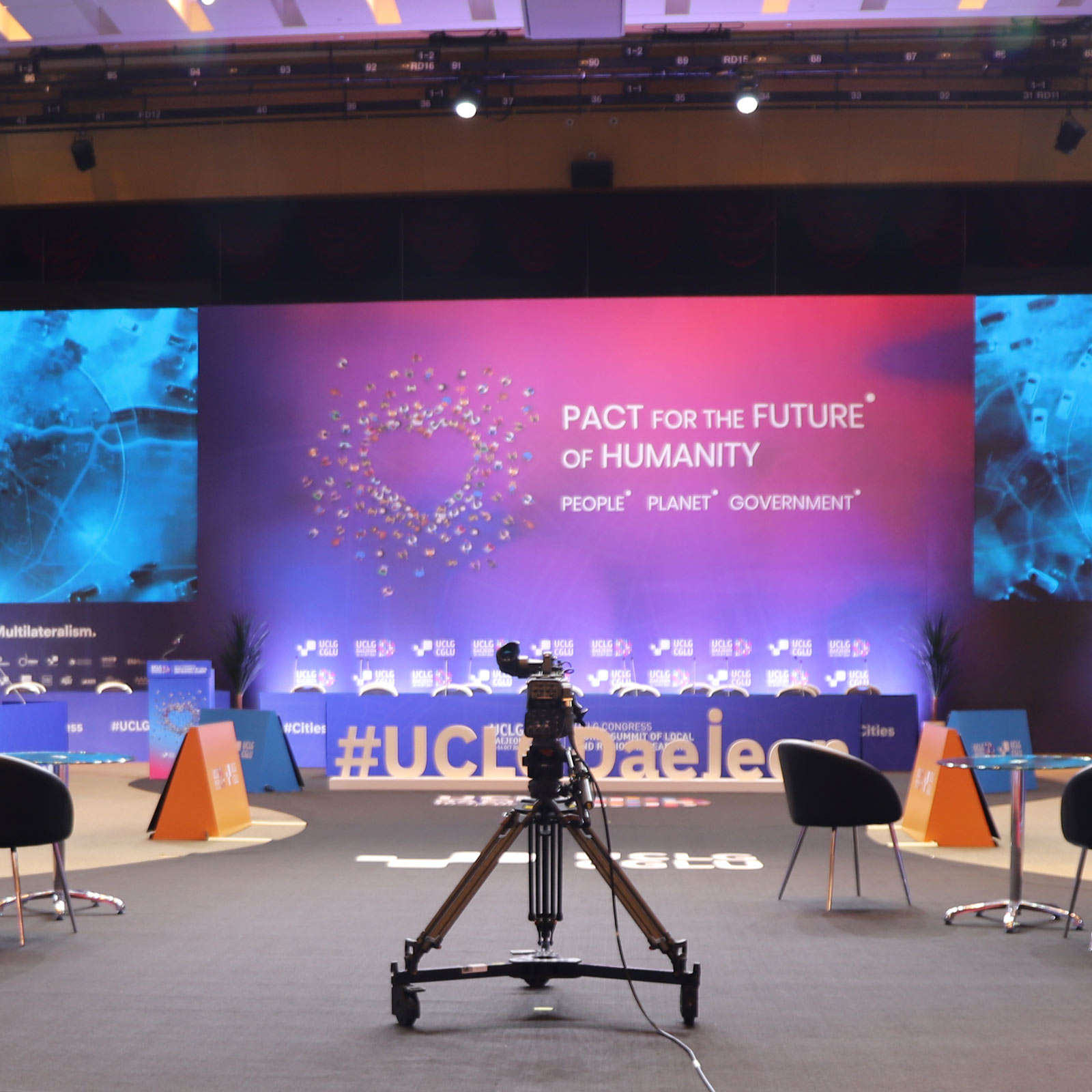Towards a networked
multilateralism
A period to sow for future harvesting
The centennial municipal movement managed to be more relevant than ever in the multilateral period 2012-2016, resulting in an increase of effective and inclusive spaces, not all of them sufficiently recognized, aimed at influencing the global decision-making process. In the 2016-2022 period, the municipal movement was able to secure structural spaces in the international sphere and bring the localization of the SDGs to global forums. The period 2023-2025 will be important for further advancing the recognition of local and regional governments at the multilateral level. These seeds will help prepare a better harvest for the 2026-2030 cycle in terms of the role of local and municipal governments.
Multilateral processes take time. This means that any “consensus-building cycle” takes at least two years. António Guterres, Secretary-General of the United Nations, launched his report, “Our Common Agenda”, in September 2021, just after being re-elected for a second and last term. The year 2026 will be his last one in office, and he probably knows better than anyone that it will be mostly about handing things over to the new Secretary-General. Many stakeholders are advocating for the first-ever woman to be selected to lead the organization. Hence, the period 2023-2025 is key for his multilateral vision and legacy.
The plan laid out in “Our Common Agenda” pivots around the idea of “accelerating” action through a roadmap with some milestones between 2023 and 2025: a Summit of the Future; the World Social Summit, and a biennial summit on the global economy.
The 2023 Global Sustainable Development Report is also expected to be released in September 2023. This report builds on the 2019 report, but a new independent group of fifteen scientists were appointed to prepare it. While it is probably too late to influence its content, preparations for the 2027 Global Sustainable Development Report will start soon.

© Clément Duguerre
The “Summit of the Future: multilateral solutions for a better tomorrow” was initially scheduled for 2023, but a compromise was made to postpone it to 22 and 23 September 2024, in New York, and to hold a preparatory ministerial meeting on 18 September 2023. The outcome of the Summit will be “A Pact for the Future” adopted by consensus, though a majority vote system was also on the table.
While the Summit for the Future is under preparation, local and regional government associations are already starting to define their strategic priorities and contributions to the key period 2023-2025 for the multilateral system.
In October 2022, at the 7th UCLG World Congress in Daejeon, Republic of Korea, local and regional governments and their associations around the world adopted the UCLG Pact for the Future of Humanity. The last paragraph of this political declaration, with the same title as the expected outcome of the United Nations Summit, defines its spirit as aiming to “speak directly to the international development agendas beyond 2030, providing the contribution” of the local and regional constituency to the United Nations Summit of the Future and other fora within the “Our Common Agenda” roadmap.
The visions and aspirations reflected in the UCLG Pact will be shaped into actionable commitments throughout 2023 and will serve as the strategic vision for UCLG, being jointly pursued and articulated around the Global Global Taskforce of Local and Regional Governments. The Pact reaffirms that “it is now time for the local multilateral system to demonstrate that it has come of age and it is ready to join national and international partners in bringing about truly transformative action”.
The very existence of the Global Taskforce represents a landmark achievement for the international municipal movement. Local and regional governments are the only United Nations non-state stakeholders that have a mechanism such as the Global Taskforce to develop and coordinate inputs into all policy processes. This “networked multilateralism” was key in the Habitat III conference and the New Urban Agenda adoption process. After 2015 and 2016, it has continued collaborating with the United Nations on facilitating the follow-up on the implementation of the major global agendas at the local level.
Which multilateral key moments will 2023 offer for local and regional governments?
After the High-Level Meeting on the progress of the implementation of the New Urban Agenda in April 2022 and the World Urban Forum in Katowice (Poland)in July 2022, the second session of the UN-Habitat Assembly in June 2023 should be a new opportunity to keep accelerating sustainable urban development. The Global Taskforce of Local and Regional Governments will organize a World Assembly of Local and Regional Governments’ session in Nairobi aimed at high-impact actions and partnerships to be further developed during the year.
The High-Level Political Forum on Sustainable Development (HLPF) reviews the implementation of the Agenda annually. In July 2023, the HLPF will review the SDG6, SDG7, SDG9, SDG11, and SDG17. In the case of SDG11, in February, an expert group meeting will take place in Bilbao, Spain. The discussion will help inform the HLPF, as well as review the first draft of the SDG11 Synthesis Report 2023. The seventh annual report presented by UCLG to the HLPF, on behalf of the Global Taskforce of Local and Regional Governments, will also focus on the contribution of local governments worldwide to achieve SDG 11.
The sixth edition of the Local and Regional Governments Forum will also be held within the framework of the HLPF, building on the successful reporting processes at the subnational level, such as the Voluntary Local Reviews (VLRs) and the Voluntary Subnational Reviews (VSRs).
The second SDG Summit since the adoption of the 2030 Agenda will take place on 19 and 20 September 2023. A Local and Regional Governments Forum and a Private Sector Forum have been announced as special events to complement the SDG Summit. Another UCLG report focusing on all SDGs with a stronger political dimension (demonstrating the importance of the role of local and regional governments in achieving the 2030 Agenda), will be presented within the framework of the SDG Summit.
At the end of the year in Dubai, the 2023 United Nations Climate Change Conference (COP28) will show how the historic breakthrough in loss and damages has advanced. The presence and voice of local and regional governments in COP27 was key to this progress.

KEEP AN EYE ON
Recommendations on Effective Multilateralism
A High-Level Advisory Board on Effective Multilateralism was established in March 2022. The Board, composed of 10 members, is co-chaired by the former President of Liberia, Ellen Johnson Sirleaf, and the former Prime Minister of Sweden, Stefan Löfven. Their non-binding recommendations are expected to be published in early 2023. It would be key to see how they approach the recognition of local and regional authorities as part of the more effective multilateral system.
More information at highleveladvisoryboard.org
The World Bank Evolution Roadmap
The World Bank started the year 2023 with a meeting of its Board of Executive Directors to discuss a Management and Evolution Roadmap. The draft document, dated 18 December 2022, is worth reading, in order to glimpse how the Bank is heading a hectic year to approve a review of its vision, mission, operating model, and financial capacity. In an official statement, the World Bank explains that the “evolution” aims to better address the scale of development challenges such as poverty, shared prosperity, inequality, and cross-border challenges, including climate change, pandemic, and fragility, conflict and violence. The process will include engagement with other stakeholders.